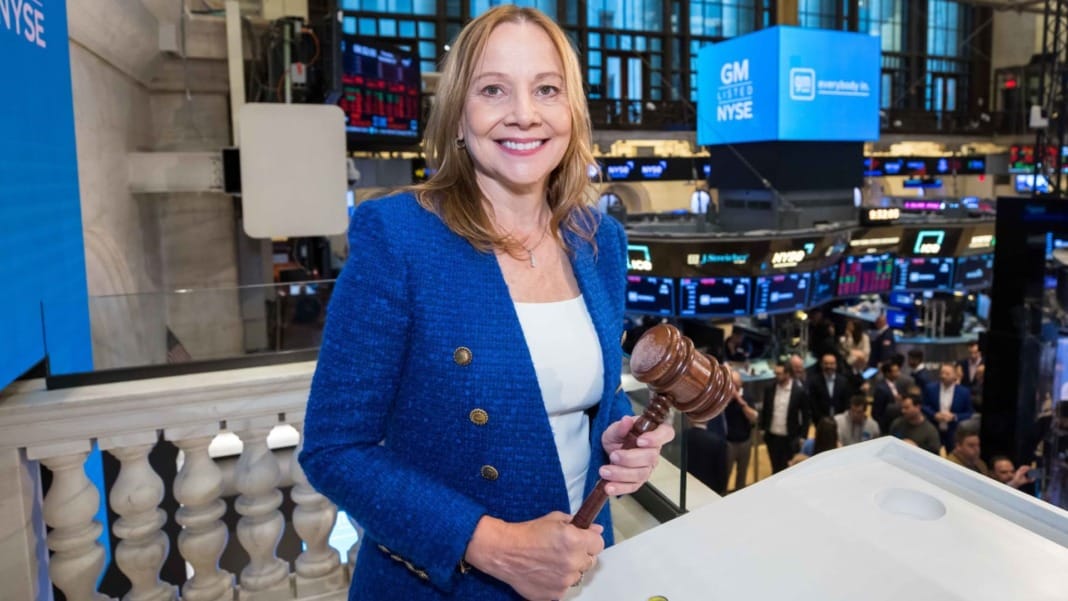General Motors (GM) is set to start making a profit from its electric vehicles (EVs) by the end of this year, right on schedule, according to the company’s CEO, Mary Barra. In a recent interview with The New York Times, Barra confirmed that despite setbacks in manufacturing and supply chain issues, GM remains committed to its long-term goals. This includes phasing out internal combustion engine (ICE) vehicles by 2035 and achieving carbon neutrality by 2040.
Although GM experienced delays in its EV production due to battery-related problems last year, Barra was reassured that these issues had been resolved. The automaker is now on track to meet its production targets.
Competing in the EV market
Tesla dominates the US EV market and has been profitable from its electric vehicles since 2021. Ford is the second-largest EV producer in the country. Still, it faces significant losses from its Model E division, with over a billion dollars in losses recorded in the first two quarters of this year alone. Other EV manufacturers like Rivian and Lucid also need help financially, relying heavily on external investors to stay afloat.
While demand for EVs in the US continues to grow, the pace of this growth has been unpredictable. This has prompted carmakers to adjust their strategies, often introducing more hybrid models alongside their fully electric offerings. The biggest challenge facing EV manufacturers is still the high cost of these vehicles. However, US buyers can benefit from federal tax incentives of up to US$7,500, which can help reduce the overall purchase price. These tax credits are only available for EVs made in the US. They must comply with strict pricing and material sourcing rules to maintain competitiveness with China, which produces cheaper EVs.
GM’s investment in EV production and battery technology
Only a limited number of GM vehicles, such as the Chevy Equinox and Blazer EV, qualify for the government’s EV tax incentives. GM is investing heavily in battery production to improve affordability and expand its offering. It plans to open a new battery cell development centre by 2027 in Warren, Michigan. Additionally, the company is partnering with Samsung SDI to build a US$3.5 billion EV battery plant in Indiana and is working with LG to construct another facility in Lansing, Michigan. Production at GM’s existing plants in Spring Hill, Tennessee, and Warren, Ohio, has also ramped up, thanks to a partnership with LG.
According to The New York Times, GM will benefit from around US$800 million in government subsidies for US-based battery production, supported by the Biden administration’s Inflation Reduction Act. This legislation aims to boost domestic manufacturing of EV batteries, making GM’s investment in the sector more viable.
Improving battery technology and driving range
GM is considering incorporating lower-cost lithium iron phosphate (LFP) batteries in its future EV models to reduce production costs. Although these batteries typically provide a shorter driving range than the more expensive nickel cobalt manganese (NCM) batteries, GM believes the difference will be minimal. GM’s EVs currently offer a driving range of around 300 miles per charge, and the company is confident that its larger LFP-powered vehicles will achieve over 350 miles on a full charge.
GM’s Chevy Equinox is already one of the most affordable EVs on the market, priced below US$30,000 after tax credits. While it lacks features such as Apple CarPlay, which is also absent in Tesla’s popular Model 3, the Equinox offers an accessible option for consumers looking to switch to electric vehicles.
Tesla has long been the leader in EV charging infrastructure, offering a reliable network that easily supports long road trips. However, GM is catching up by providing access to Tesla’s charging stations through an optional NACS to CCS adapter. The company is also investing in its own EV charging stations with partner EVgo.





